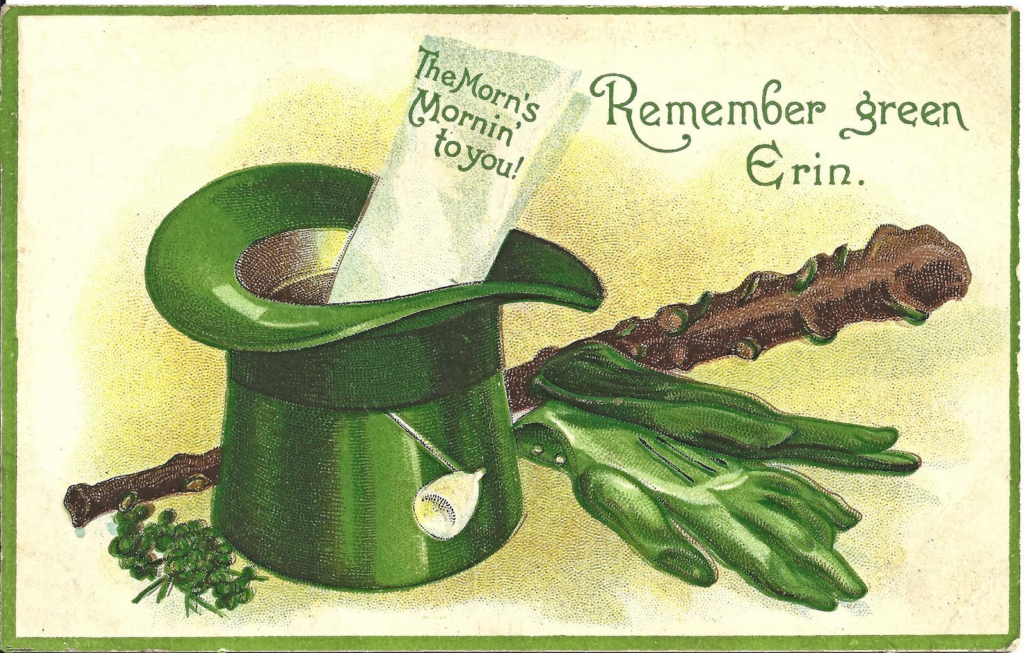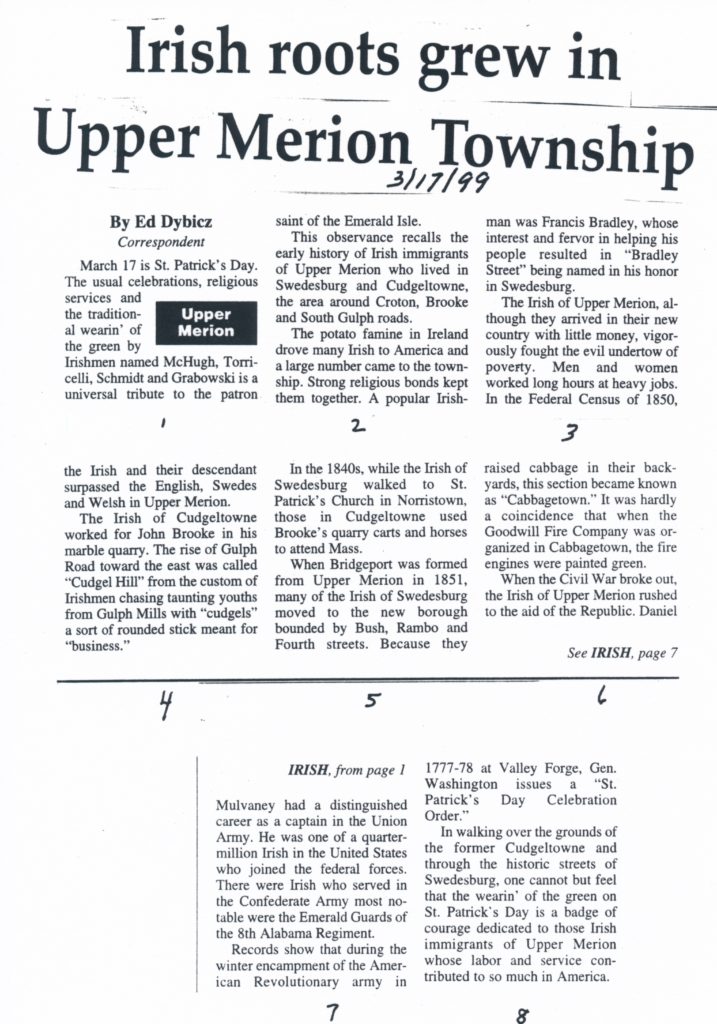By Ed Dybicz, 3/17/1999
March 17 is St. Patrick’s Day. The usual celebrations, religious services and the traditional wearin’ of the green by Irishmen named McHugh, Torricelli, Schmidt and Grabowski is a universal tribute to the patron saint of the Emerald Isle.
This observance recalls the early history of Irish immigrants of Upper Merion who lived in Swedesburg and Cudgeltowne, the area around Croton, Brooke and South Gulph roads.
The potato famine in Ireland drove many Irish to America and a large number came to the township. Strong religious bonds kept them together, A popular Irishman was Francis Bradley, whose interest and fervor in helping his people resulted in “Bradley Street” being named in his honor in Swedesburg.
The Irish of Upper Merion, although they arrived in their new country with little money, vigorously fought the evil undertow of poverty. Men and women worked long hours at heavy jobs. In the Federal Census of 1850, the Irish and their descendant surpassed the English, Swedes and Welsh in Upper Merion.
The Irish of Cudgeltowne worked for John Brooke in his marble quarry. The rise of Gulph Road toward the east was called “Cudgel Hill” from the custom of Ireshmen chasing taunting youths from Gulph Mills with “cudgels” a sort of rounded stick meant for “business.”
In the 1840s, while the Irish of Swedesburg walked to St. Patrick’s Church in Norristown, those in the Cudgeltowne used Brooke’s quarry carts and horses to attend Mass.
When Bridgeport was formed from Upper Merion in 1851, many of the Irish of Swedesburg moved to the new borough bounded by Bush, Rambo and Fourth streets. Because they raised cabbage in their backyards, this section became known as “Cabbagetown.” It was hardly a coincidence that when the Goodwill Fire Company was organized in Cabbagetown, the fire engines were painted green.
When the Civil War broke out, the Irish of Upper Merion rushed to the aid of the Republic. Daniel Mulvaney had a distinguished career as a captain in the Union Army. He was one of a quarter-million Irish in the United States who joined the federal forces. There were Irish who served in teh Confederate Army most notable were the Emerald Guards of teh 8th Alabama Regiment.
Records show that during the winter encampment of the American Revolutionary army in 1777-78 at Valley Forge, Gen. Washington issues a “St. Patrick’s Day Celebration Order.”
In walking over the grounds of the Cudgeltowne and through the historic streets of Swedesburg, one cannot but feel that the wearin’ of the green on St. Patrick’s Day is a badge of courage dedicated to those Irish immigrants of Upper Merion whose labor and service contributed to so much in American.


